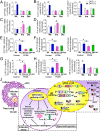Alternative splicing of the androgen receptor in polycystic ovary syndrome
- PMID: 25825716
- PMCID: PMC4403157
- DOI: 10.1073/pnas.1418216112
Alternative splicing of the androgen receptor in polycystic ovary syndrome
Abstract
Polycystic ovary syndrome (PCOS) is one of the most common female endocrine disorders and a leading cause of female subfertility. The mechanism underlying the pathophysiology of PCOS remains to be illustrated. Here, we identify two alternative splice variants (ASVs) of the androgen receptor (AR), insertion and deletion isoforms, in granulosa cells (GCs) in ∼62% of patients with PCOS. AR ASVs are strongly associated with remarkable hyperandrogenism and abnormalities in folliculogenesis, and are absent from all control subjects without PCOS. Alternative splicing dramatically alters genome-wide AR recruitment and androgen-induced expression of genes related to androgen metabolism and folliculogenesis in human GCs. These findings establish alternative splicing of AR in GCs as the major pathogenic mechanism for hyperandrogenism and abnormal folliculogenesis in PCOS.
Keywords: AR; PCOS; folliculogenesis; hyperandrogenism; splicing.
Conflict of interest statement
The authors declare no conflict of interest.
Figures




References
-
- Norman RJ, Dewailly D, Legro RS, Hickey TE. Polycystic ovary syndrome. Lancet. 2007;370(9588):685–697. - PubMed
-
- Hillier SG, Tetsuka M. Role of androgens in follicle maturation and atresia. Baillieres Clin Obstet Gynaecol. 1997;11(2):249–260. - PubMed
-
- Walters KA, et al. Female mice haploinsufficient for an inactivated androgen receptor (AR) exhibit age-dependent defects that resemble the AR null phenotype of dysfunctional late follicle development, ovulation, and fertility. Endocrinology. 2007;148(8):3674–3684. - PubMed
Publication types
MeSH terms
Substances
Associated data
- Actions
Grants and funding
LinkOut - more resources
Full Text Sources
Other Literature Sources
Medical
Molecular Biology Databases
Research Materials

